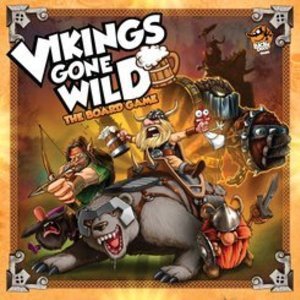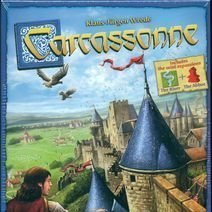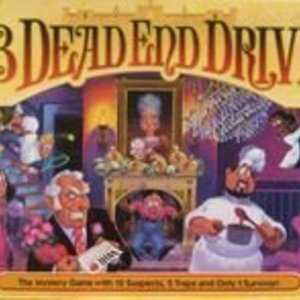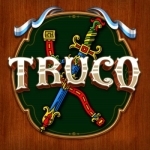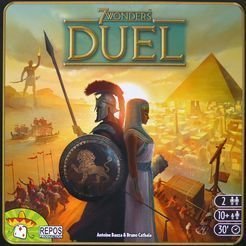The Marinated Meeple (1853 KP) rated Vikings Gone Wild in Tabletop Games
Aug 3, 2018
Rikki Hammond (33 KP) rated Carcassonne in Tabletop Games
May 23, 2019
The rules of Carcassonne are very simple. Each player will pick a random tile from a stack, and starting with the first player (who always starts with the same beginning tile) will place their tile, so that it connects to one or more adjacent tiles. Each tile will have a road, city or church on it. Roads can only connect with roads, cities with cities, and churches around either of these.
Once a tile is placed, the player can then choose to place one of their meeples on it, either on a road, city, church, or surrounding field. Once that particular area is completed (a road connects to a town, city or church on either end or a city is completely walled around) then that meeple scores you points. 1 point for each section of road per tile, 2 points for each city piece per tile (double if that city tile has a shield on it) and you will score 9 points if you manage to completely surround a church with 8 other tiles. Once the meeple scores, the player removes it from the tile, and can be used again on another tile.
Play continues like this until the tile stack is depleted, then some endgame scoring occurs, where unfinished roads, churches and cities score 1 point per tile in the area. If farmers were used (laying a meeple face down on a field) then 3 points are scored per completed city in that field area. If ever two meeples share the same city, road or field through future tile placements, then each player will get the same points, and whoever has the most points at the end, is the winner.
Carcassone plays between 2 to 5 players, and having played with all player counts, I can say that it plays well, no matter how many players are there. The components are great. The tiles are colourful, and one the game is over, you can build some pretty impressive landscapes. Each player will have different coloured meeples, so it's easy to tell whose is whose, and the score tracker is a handy addition.
My only criticisms I can find is that, after playing a few games, you find that there's not much in the way of variety when it comes to placement of the tiles, and some more hardcore gamers could class this game as too simple. But these are very minor niggles.
Personally, I think Carcassonne is a fantastic first step for people who may not have played many board or tile games before, and if you do get tired if it, there are tonnes of expansions for it, which can add more variety to the game.
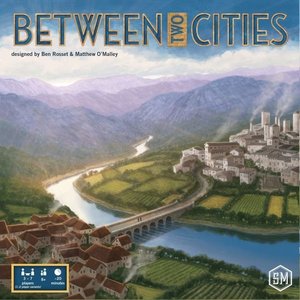
Between Two Cities
Tabletop Game
It is the early 1800s, a time of immense construction and urbanization. You are a world-renowned...
BoardGames 6playergames StonemeierGames 2015Games
Matthew Krueger (10051 KP) rated 13 Dead End Drive in Tabletop Games
Jul 17, 2020 (Updated Jul 18, 2020)
13 Dead End Drive is a murder-themed board game originally from Milton Bradley. Released in 1993, it was followed in 2002 by a sequel, 1313 Dead End Drive. Currently, Winning Moves Games USA Winning Moves publishes the game in the USA.
The story behind the game involves the death of a wealthy old woman triggering a feud over her will. The players utilize traps located on the game board, which represents a mansion, to kill characters controlled by other players in order to claim the estate for themselves.
The Gameplay:
At the start of gameplay, players are dealt "Character cards" which correspond to matching pawns on the board. Since there are 12 characters, it is often the case that players control more than one character. However, which player controls which character is not revealed. Along with the character cards, there are also Portrait Cards, which determine who the current favorite for the inheritance is, and Trap Cards, which are used to spring traps and knock off other players.
During each turn, a player rolls two dice and moves two pawns, one pawn for each die. It is legal for players to move a pawn that is not theirs in order to bring it closer to or onto a Trap Space. All pawns must be moved off the red chair spaces before any pawns can be moved a second time or onto a trap space. If a pawn is moved onto a trap space by exact roll only, the player must have the corresponding trap card in his or her possession in order to spring the trap. Springing traps is not mandatory, however. After that, play proceeds on to the next player. A pawn can not pass through or land on the same space as another pawn during the same turn.
During the game, a Portrait Card is displayed in the picture frame above the fireplace. That character is now the current favorite to inherit the fortune. At that moment, for all intents and purposes, that character is now marked for death and must try to escape the mansion before he or she is either knocked off or the portrait changes (see "Special Spaces and Rules" below).
Also, during the game, a Detective is waiting outside, slowly advancing toward the front door. His arrival signifies the reading of the will and the announcement of the winner. The Detective can only move one space at a time, and only when a Detective Card (hidden inside the Trap Card pile) is drawn. There are 13 steps to the front door. If the Detective makes it to the front door before all other characters have been eliminated, the game is over.
Ways to win:
There are three ways to win 13 Dead End Drive:
Be the last character alive.
Escape the Mansion while your character's picture is displayed in the Picture Frame.
Have your character's picture displayed in the Picture Frame when the Detective reaches the front door.
Traps:
13 Dead End Drive has five different booby traps that are used to dispose of other characters. In the story of the game, the traps are designed to make deaths appear accidental. The traps are the Chandelier, the Bookcase, the Stairs, a Statue in a suit of armor, and the Fireplace: if a pawn has the misfortune to land on the trap space in front of or under one of these traps, the Trap card is played and the trap is sprung in the following ways:
To activate the Chandelier, flip a switch in the music room that drops the chandelier onto the pawn, eliminating it from play.
To activate the Bookcase, move that pawn up onto the top of the ladder and rest that pawn on top of the bookcase in the library, and flip a switch that will send the pawn flying back onto the board and eliminating it from play.
In order to activate the Stairs, a player can move it up onto the top of the stairs in the hall and flip a switch that will violently toss the pawn back down the stairs and onto the board, resulting in its elimination.
To activate the Statue, in the gallery, a player can flip a switch that will send a statue in a full suit of armor crashing down onto the pawn.
The Fireplace is activated in the dining room when a player flips a switch that will send the pawn flying backwards and into the figurative fire, though the box describes it as a Trap Door.
When a player moves a pawn onto a Trap Space, they must draw a card from the Trap Card pile (if they do not already have the matching trap card in their possession). If the player draws the matching Trap Card, they can either play it immediately or hold the card for future use. If the player does not have the matching Trap Card, the trap cannot be sprung, but the card can be saved for future use. There are also "Wild" Trap Cards which permit all traps to be used anytime a pawn is in that space. If, however, the player draws a Detective card, the Detective is moved one space forward, but the player is permitted to draw another Trap Card before ending the turn.
Once a trap is sprung, that pawn and the matching Character Card are laid down on the "Discard" pile on the board (the couch). If during the course of play, a Portrait Card comes up for a character that has been knocked off, that card is immediately taken down and placed on the "Discard" pile, revealing a new Portrait. The Portrait cards are shuffled at the beginning of gameplay and concealed by an "Aunt Agatha" portrait card to hide the known deck order.
Special spaces and rules:
Rolling Doubles: If a player rolls doubles that player chooses whether or not to move the current Portrait card to the back of the pack to reveal new Portrait. The player then has the choice of:
Moving one pawn the total number of spaces shown on the dice, or
Moving two pawns, one pawn for each die.
Secret Passages: On the board are special spaces that represent "Secret Passages."
Any character can enter any secret passage at any time, regardless of whether or not it is by exact roll. Moving from one secret passage to another counts as one space move for a character. Secret passages are often used to bring opponent's pawns closer to traps or to bring a player's own pawn closer to the door.
Bluffing: Bluffing is permitted in "13 Dead End Drive." In terms of strategy, a player may move their own pieces towards or even onto trap spaces in an attempt to fool opponents. Even if that player has the matching trap card for the space their own character is on, they do not have to play it. Instead, they can pretend that they do not have the correct card and draw another one. If they happen to draw the right trap card, they can pretend that the card is the wrong one, and play continues as normal.
Its a excellent game, if you like clue than you will love this game. Its a excellent bluff deduction murder mystery game.

Rocket League
Video Game Watch
Soccer meets driving once again in the long-awaited, physics-based sequel to the beloved arena...
sports racing multiplayer soccer
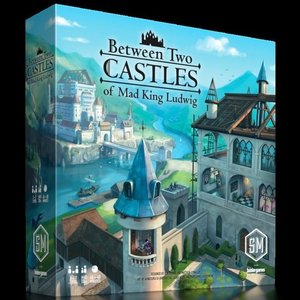
Between Two Castles of Mad King Ludwig
Tabletop Game Watch
The king demands a castle! You are a world-renowned master builder who has been asked by the Mad...
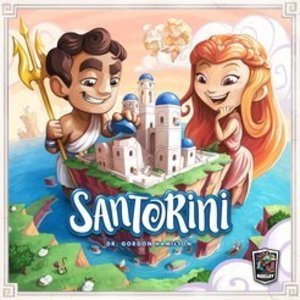
Santorini
Tabletop Game
Santorini is a re-imagining of the purely abstract 2004 edition. Since its original inception over...
BoardGames 2PlayerGames AbstractGames
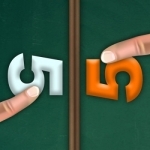
Math Fight: 2 Player Math Game
Games and Education
App
Two can have fun at the same time! Math Fight: 2 Player Math Game is one of those fun educational...
Purple Phoenix Games (2266 KP) rated 7 Wonders Duel in Tabletop Games
Oct 26, 2021
7 Wonders: Duel is a 2-player tableau and engine-building card game set in the 7 Wonders game universe where players collect cards to create an engine to gain VP using any number of winning strategies. The game takes place over three ages and the player with the most VP at the end of the game, becomes victorious via military supremacy, or wins via scientific supremacy.
To setup, place the game board between the players with the green Progress tokens, Military tokens, and red Conflict pawn upon it. Shuffle the Age I cards and lay them according to the rule book (this formation changes for each age. Age I is setup in the photo below). Each player receives seven gold and they draft their Wonders according to the process in the rules.
On a turn the active player will choose one uncovered face-up card to be used one of three different ways. The card can be added to the player’s tableau and “built” by spending resources required, if any. The card may be discarded in exchange for coins totaling 2 + the number of yellow cards built in the player’s city. Lastly, the card may be used to build a player’s Wonder card by inserting it below the Wonder and paying the cost, as in 7 Wonders proper. The next player will then take their turn.
If on a turn a player builds certain card types into their city, special actions are taken. This happens as a result of building Military or Science cards. When a player builds a Military (red shield icon) card they immediately move the Conflict token on the board one space toward their opponent’s Capital (the end of the board closest to the opponent). Should a player force the Conflict token to reach their opponent’s Capital, the attacking player immediately wins! The other special action that can be taken is with a pair of Science cards being built. For every pair of like-symbol Science cards built, the active player may choose to take one of the Progress tokens from the game board and add it to their collection. These tokens can be very powerful, and just as in 7 Wonders proper, Science is a viable yet difficult strategy. Should a player build any six unique Science icons on cards they will immediately win!
If a Military or Science supremacy victory is not achieved, the game continues to Age II, where setup of the cards is different, but play remains the same. Similarly, Age III is setup differently still and has the added bonus of three random Guild cards, which may add significant strategic icons or abilities. At the end of Age III the players count their VP from the various sources listed in the rule book and the ultimate champion is then crowned!
Components. This game comes in a very small box, so the components are also quite small. I believe myself to have medium-sized man-paws and I have not had any issues with size of components. They are all very high quality, as is to be expected from Repos Production, and are fantastically illustrated. The Conflict token is enticingly menacing, and it lures me into concentrating on a Military victory every time I play. I need to just ignore it, but it’s so beautiful! All in all, the components are great, and even though the cardstock is relatively thin, my copy has withstood many plays and has seen very little wear and tear.
So 7 Wonders: Duel exists for all those players who love 7 Wonders but do not wish to play it with the 2-player variant rules. While Duel is certainly a little sibling, it is also its own beast of a game and should be treated as such. There are several key changes in rules for Duel, such as the trading with the BANK for missing resources upon building versus paying a neighbor to borrow their resource production. Also, the obvious change of adding a board with an ever-dancing Conflict token is unique to this title. Wonders are treated differently and instead of receiving one Wonder with three layers, Duels gives each player four Wonders with just one layer.
Aside from the differences between the two games, I do believe that if you are a fan of one you will also like the other. I can see, though, gamers who dislike 7 Wonders enjoying the smaller 7 Wonders: Duel. There is just something about being able to focus on one other player and agonizing over every turn so that your opponent receives a useless card from the offer, or taking every Military or Science card possible so as to end the game as quickly as possible. My brother, Bryan, greatly dislikes 7 Wonders, but he does not mind playing Duel, or at least that is what he led me to believe…
Myself, though, I think I still prefer original 7 Wonders, and I believe it is because I can soar through a game of it in under 15 minutes while holding a conversation with the other players (as long as they have played before and are very comfortable with the rules). Duels creates a more intimate feeling and eats up more of my brainpower. Purple Phoenix Games has awarded 7 Wonders Duel the coveted Golden Feather Award, so we agree that this is a fabulous game. If you have been waffling over grabbing a copy of Duels, please do yourself a favor and just purchase it! I promise you will have a great time with it, and if you end up disagreeing with me, let me know. We can play whatever you like next time we meet.
